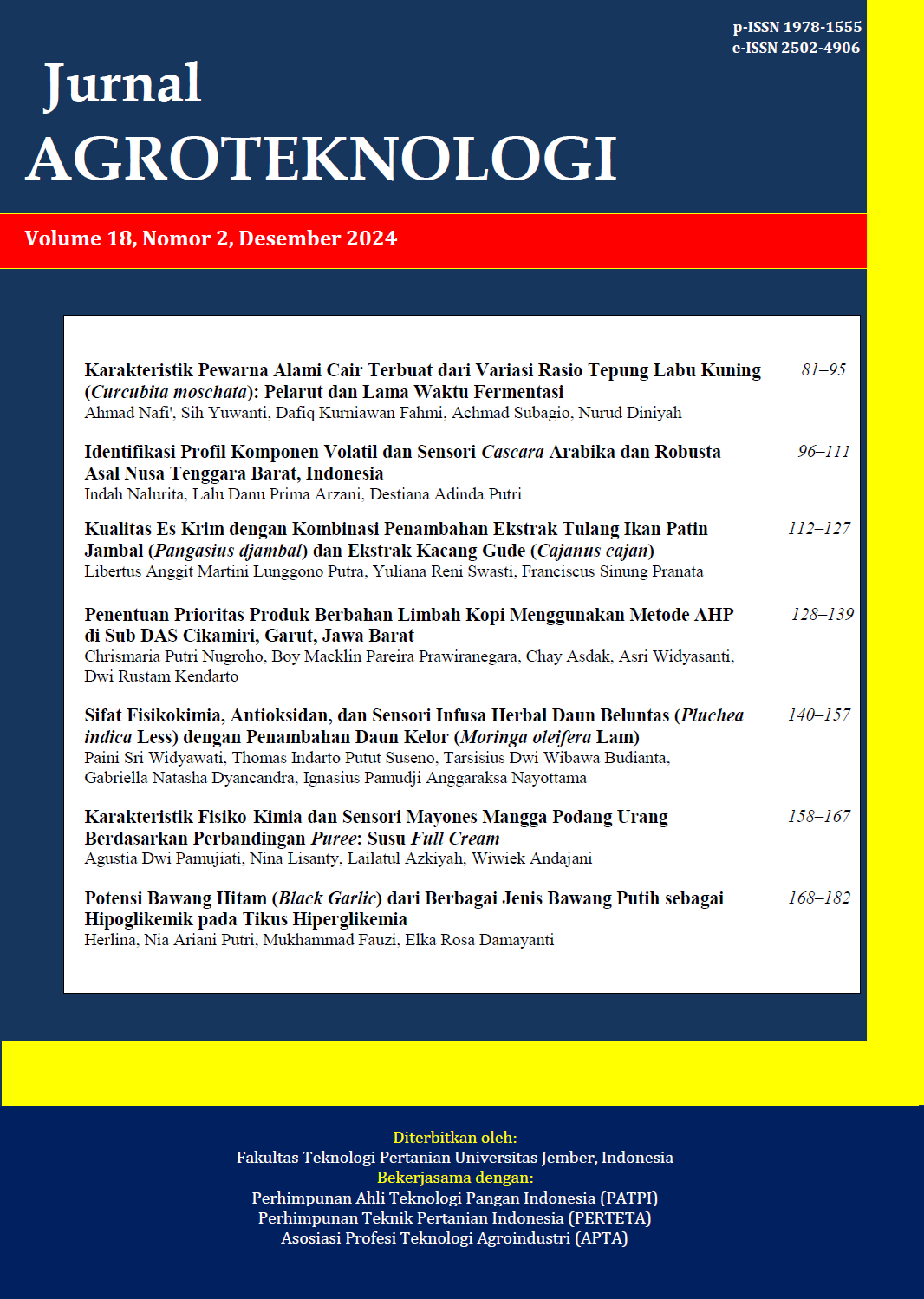Penentuan Prioritas Produk Berbahan Limbah Kopi Menggunakan Metode AHP di Sub DAS Cikamiri, Garut, Jawa Barat
Prioritization of Coffee Waste-Based Products Using AHP Method in Cikamiri Sub Watershed, Garut, West Java
DOI:
https://doi.org/10.19184/j-agt.v18i2.53266Abstract
The suboptimal management of coffee waste affected a significant challenge because the coffee waste is often discarded without being utilized optimally. As a long-term impact, this can cause environmental pollution and loss of economic opportunities from coffee waste. A similar case occurred in the Cikamiri Sub Watershed, Garut, West Java. So it needed to be carried out by applying coffee waste to potential products such as cascara tea, liquid organic fertilizer, and bio-briquettes, but the product priority is not yet known. So that, this study aims to determine the priority for processing coffee waste into high-value products, such as cascara tea, liquid organic fertilizer (POC), and bio-briquettes using the Analytic Hierarchy Process (AHP) method in the Sub DAS Cikamiri, Garut, West Java. AHP was chosen for its ability to handle multi-criteria decision-making in a structured manner. The criteria used in this study include labor availability, investment cost, high market value, and material availability. The result showed that cascara tea (prevalence value of 68.6%) was the highest-priority product, followed by liquid organic fertilizer (prevalence value of 20.7%) and bio-briquettes (prevalence value of 10.6%). This study indicated that cascara tea had high market potential, while liquid organic fertilizer and bio-briquettes can be developed by considering environmental impact and sustainability. This research provides strategic recommendations to optimize coffee waste utilization, focusing primarily on cascara tea production to enhance economic value and positive environmental impacts.
Keywords: analytical hierarchy process, bio-briquettes, cascara, coffee waste, liquid organic fertilizer
Downloads
Downloads
Published
Issue
Section
License
Copyright (c) 2025 Chrismaria Nugroho, Boy Macklin Pareira Prawiranegara, Chay Asdak, Asri Widyasanti, Dwi Rustam Kendarto

This work is licensed under a Creative Commons Attribution-ShareAlike 4.0 International License.
Jurnal Agroteknologi has CC-BY-SA or an equivalent license as the optimal license for the publication, distribution, use, and reuse of scholarly work. Authors who publish with this journal retain copyright and grant the journal the right of first publication with the work simultaneously licensed under a Creative Commons Attribution-ShareAlike 4.0 International License that allows others to share the work with an acknowledgment of the work's authorship and initial publication in this journal.









.png)
